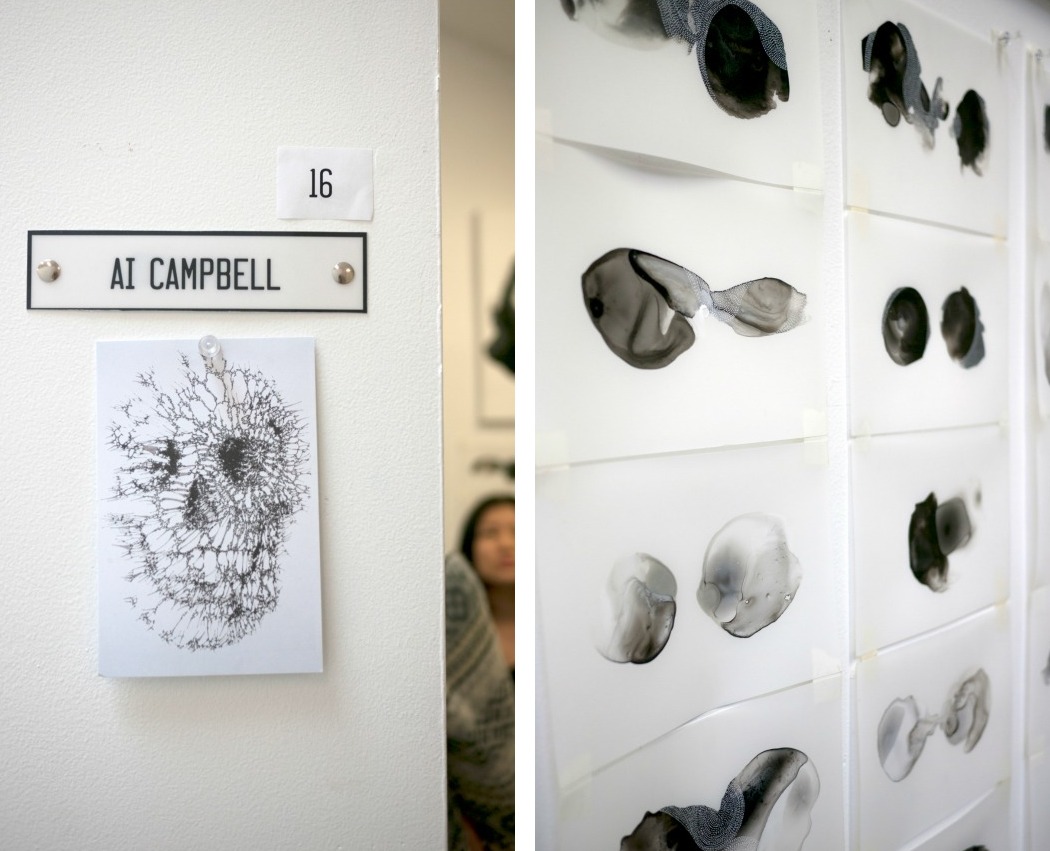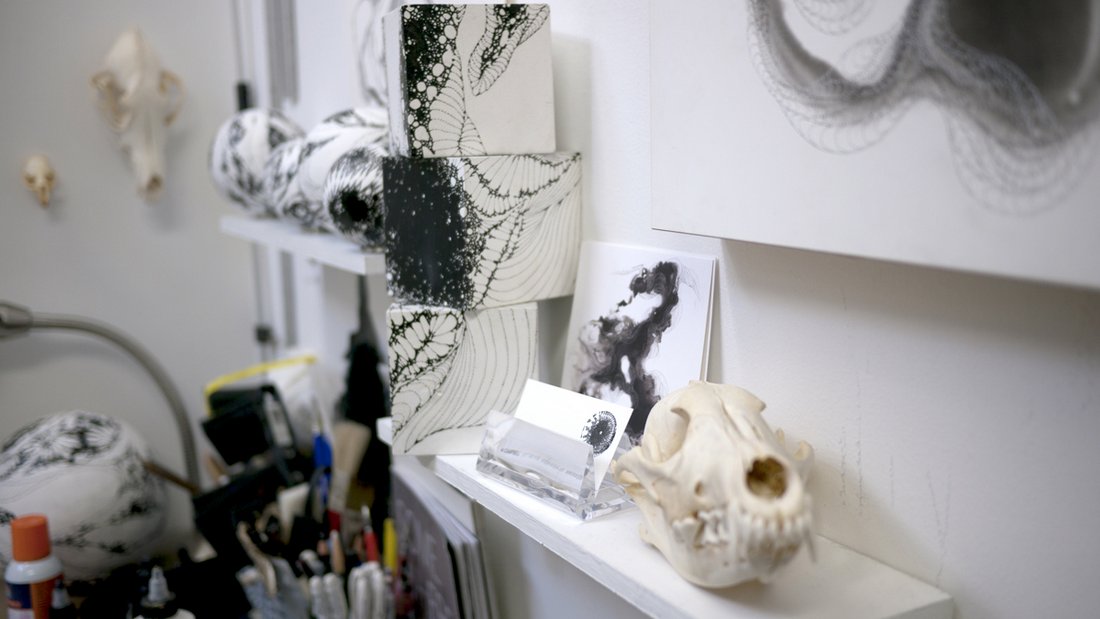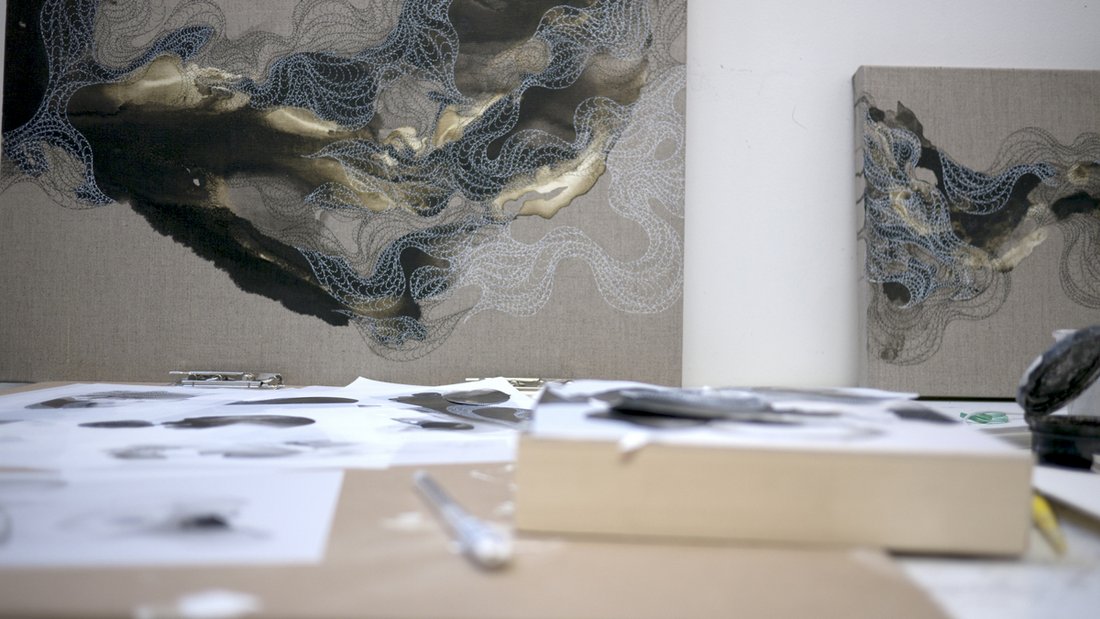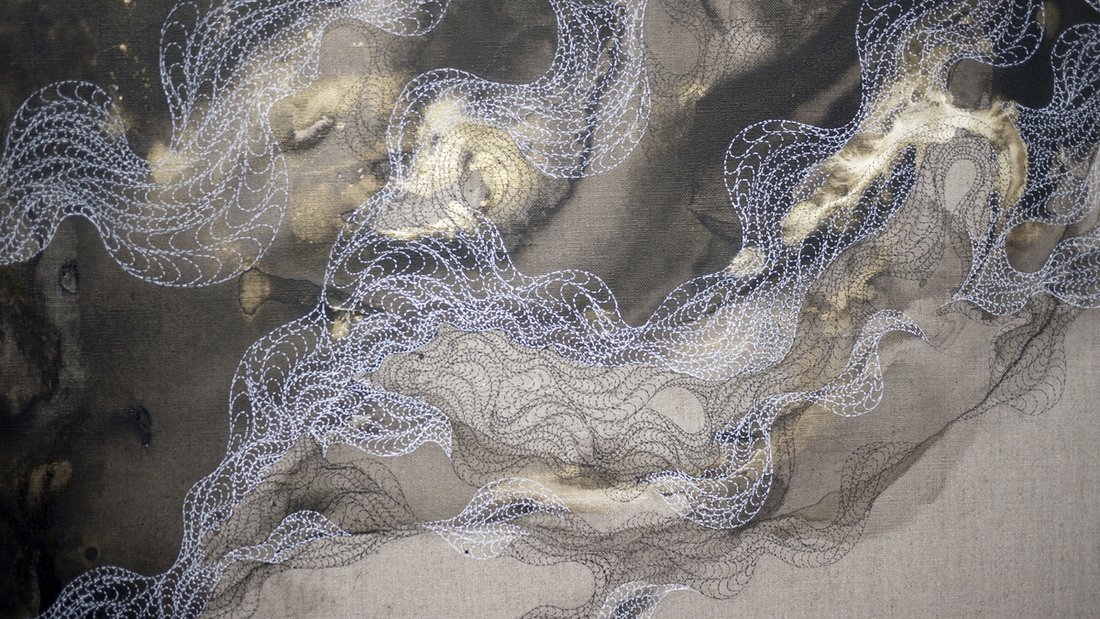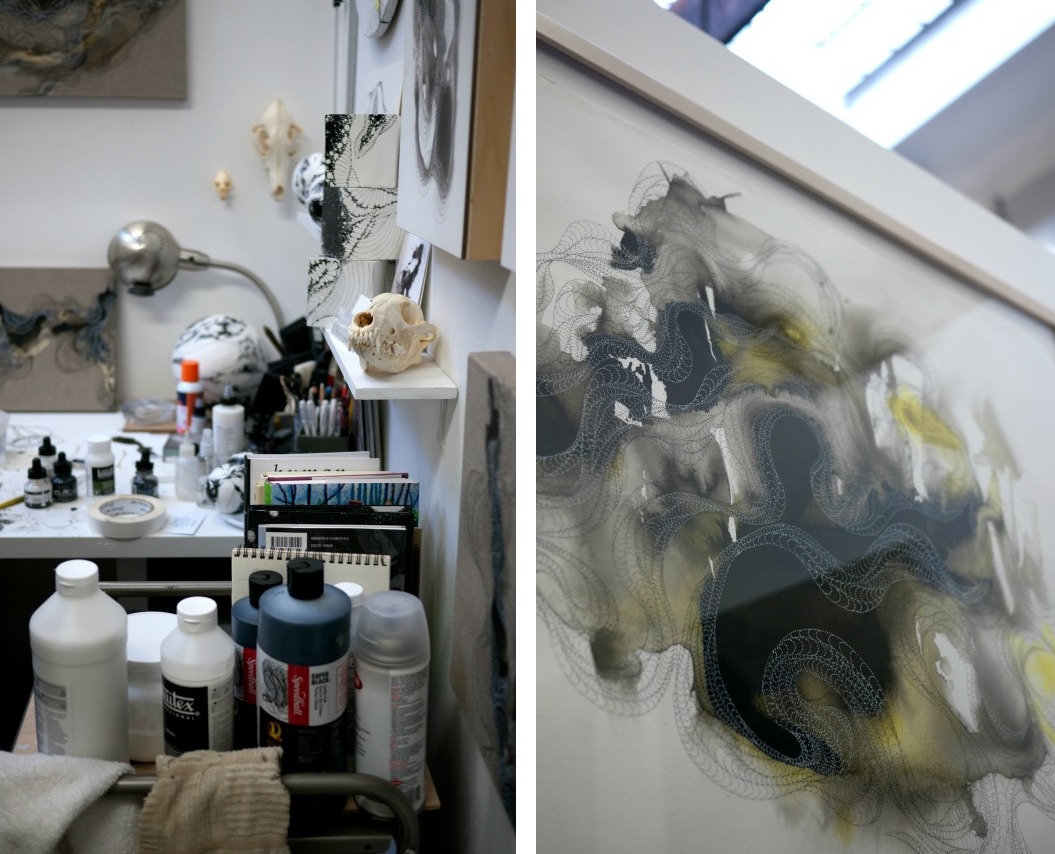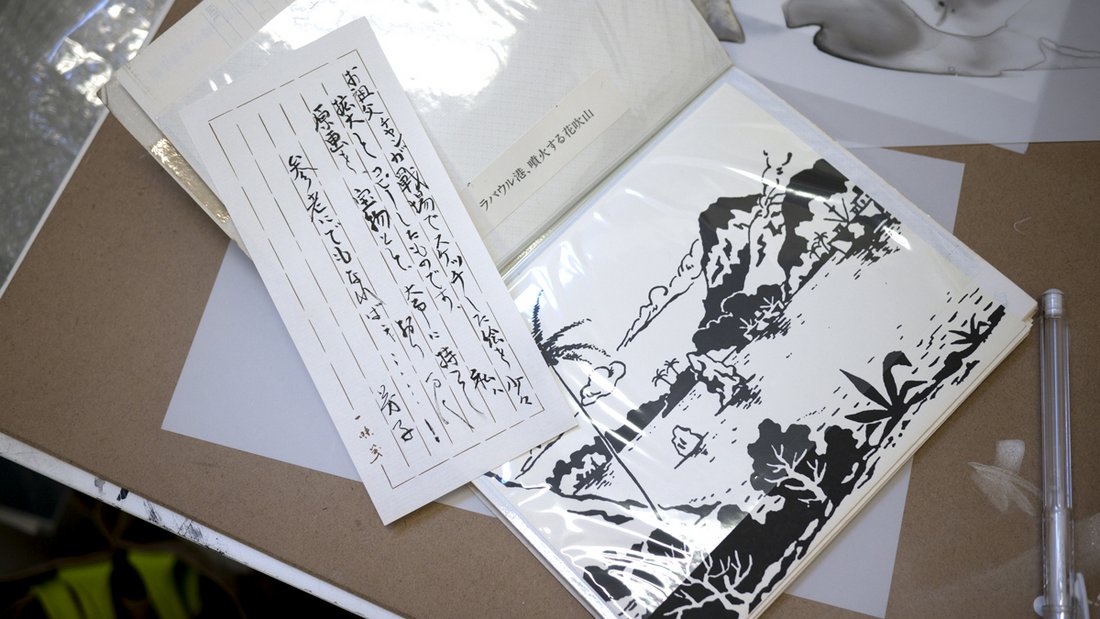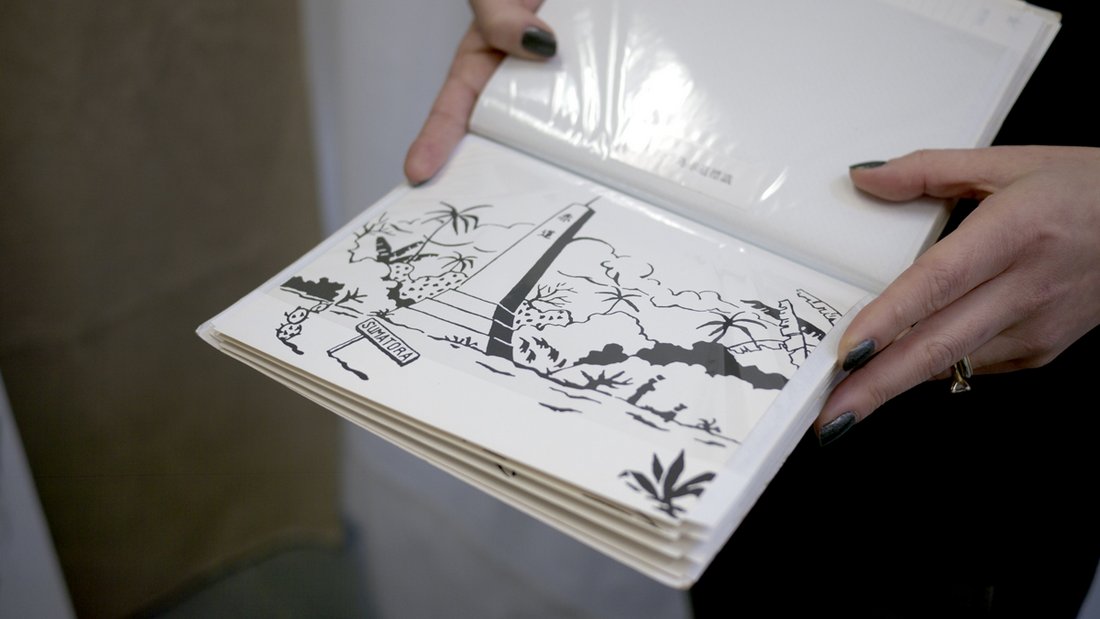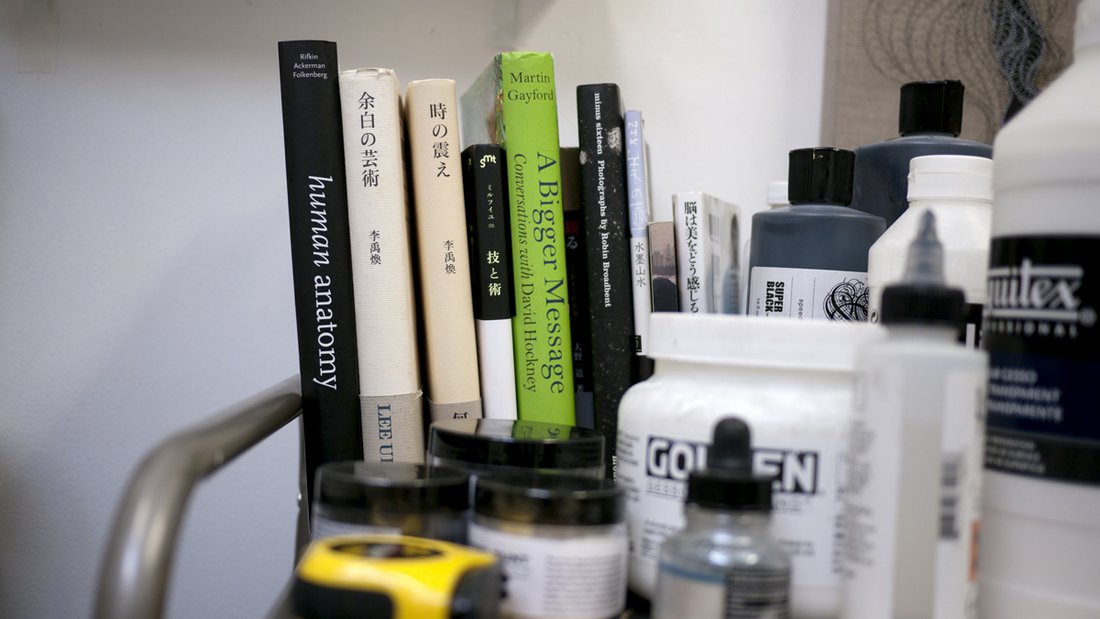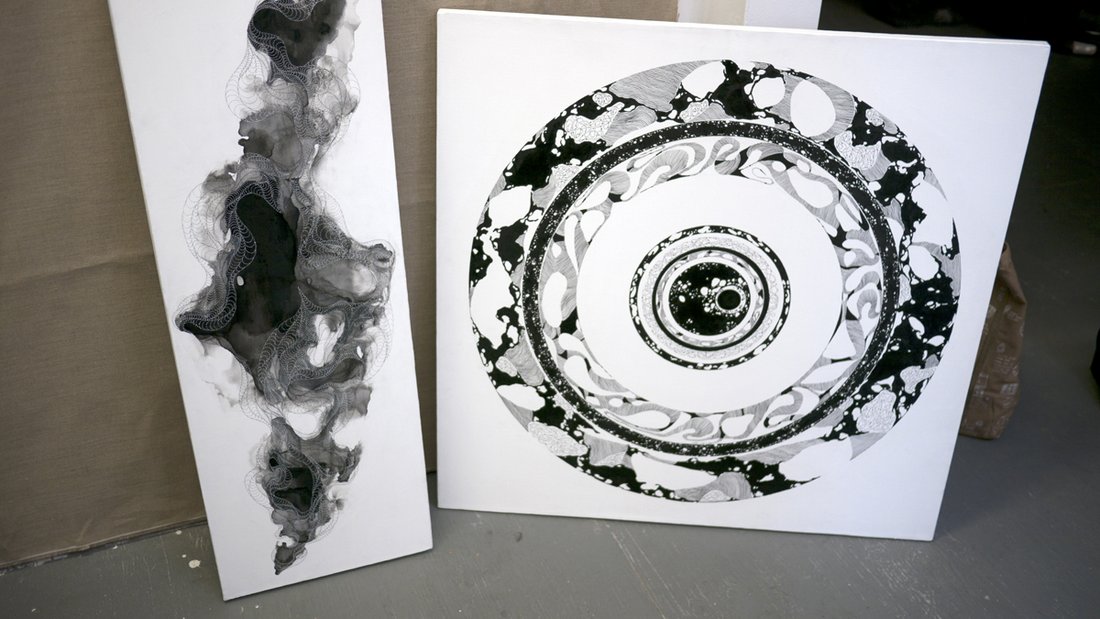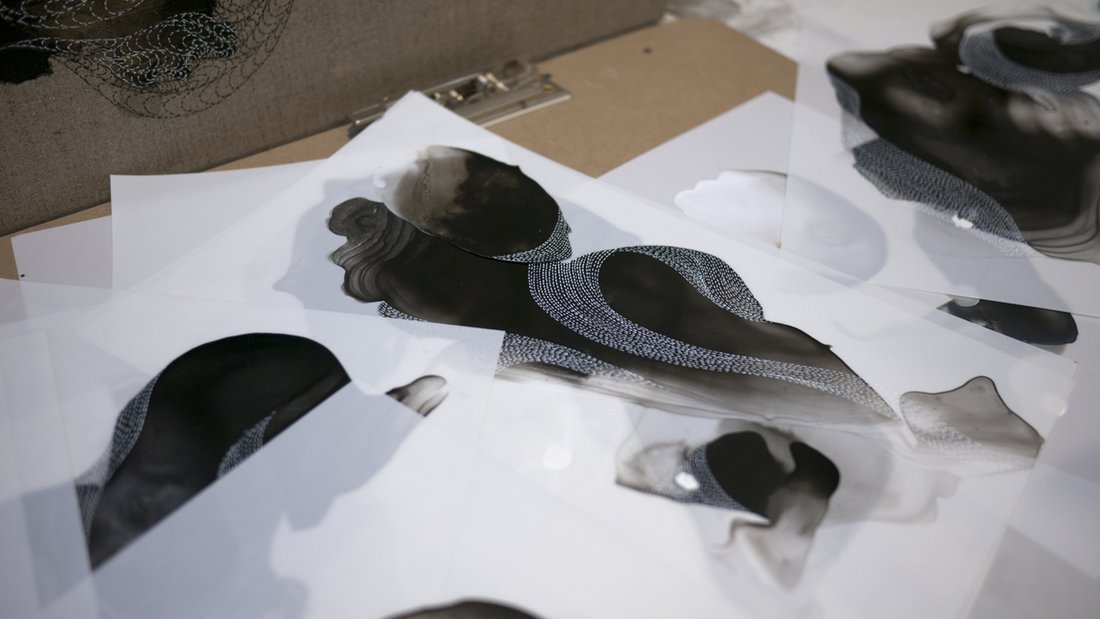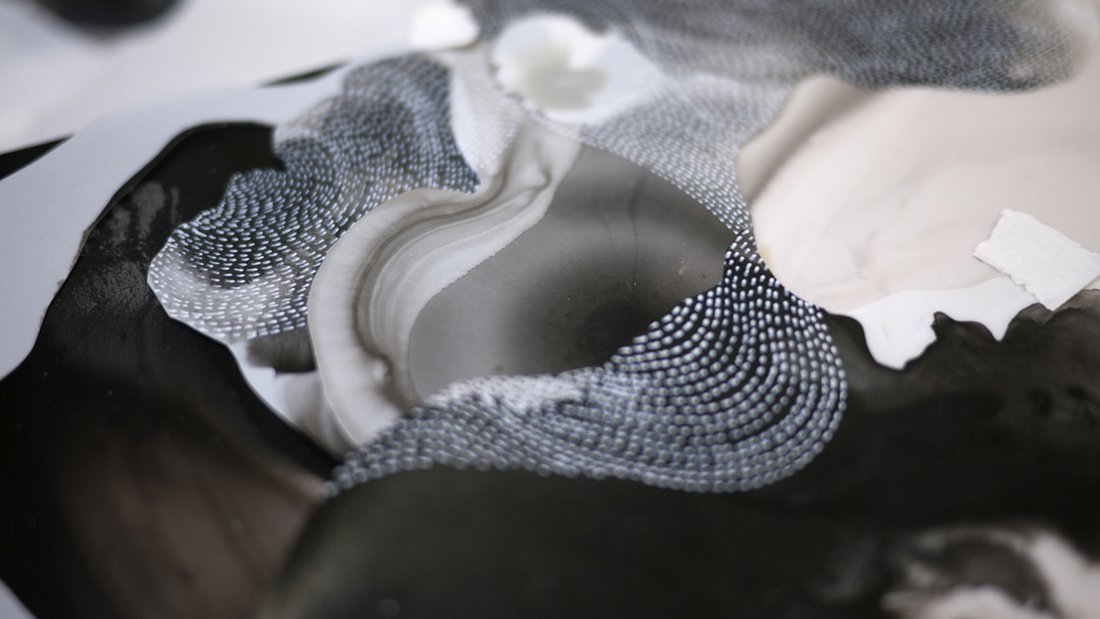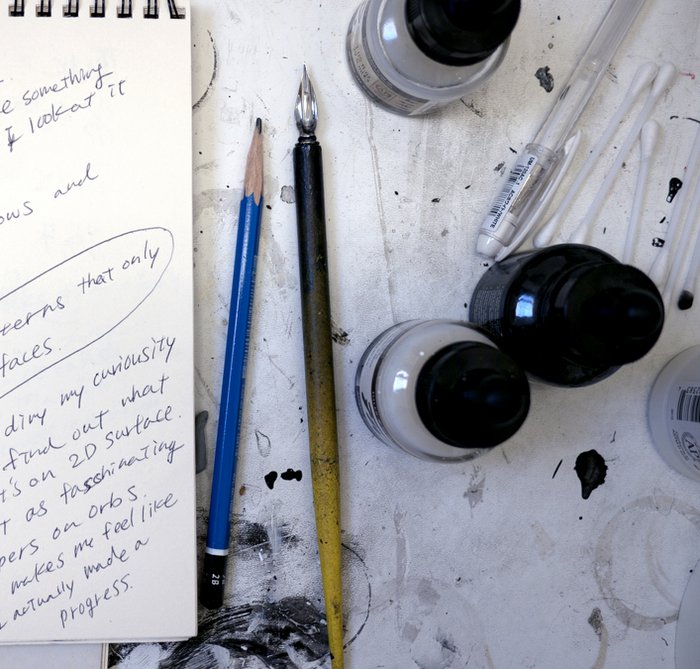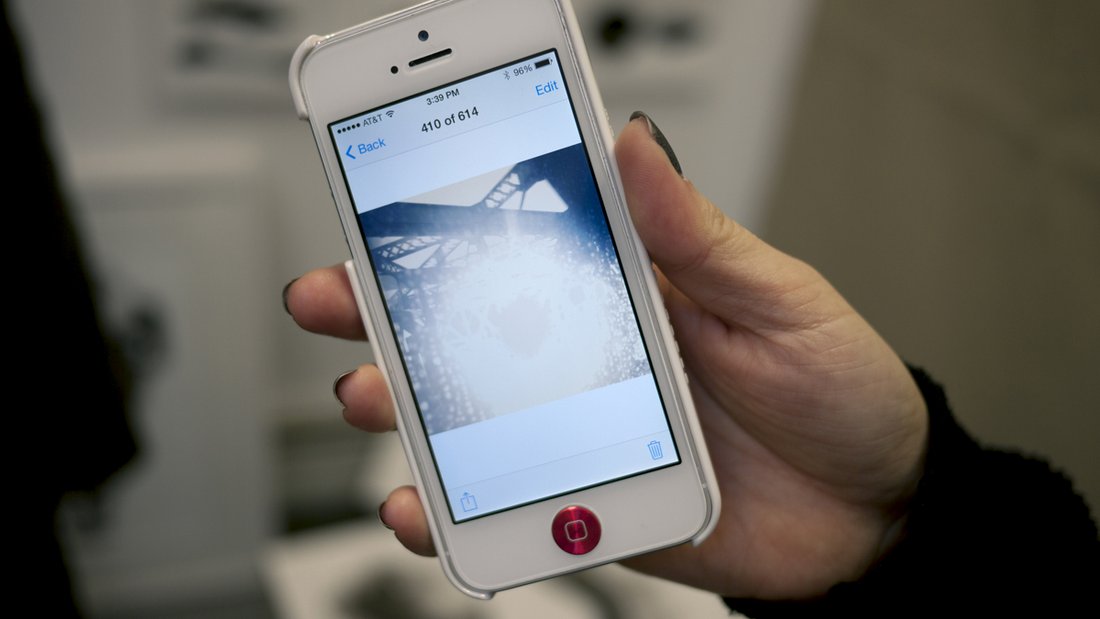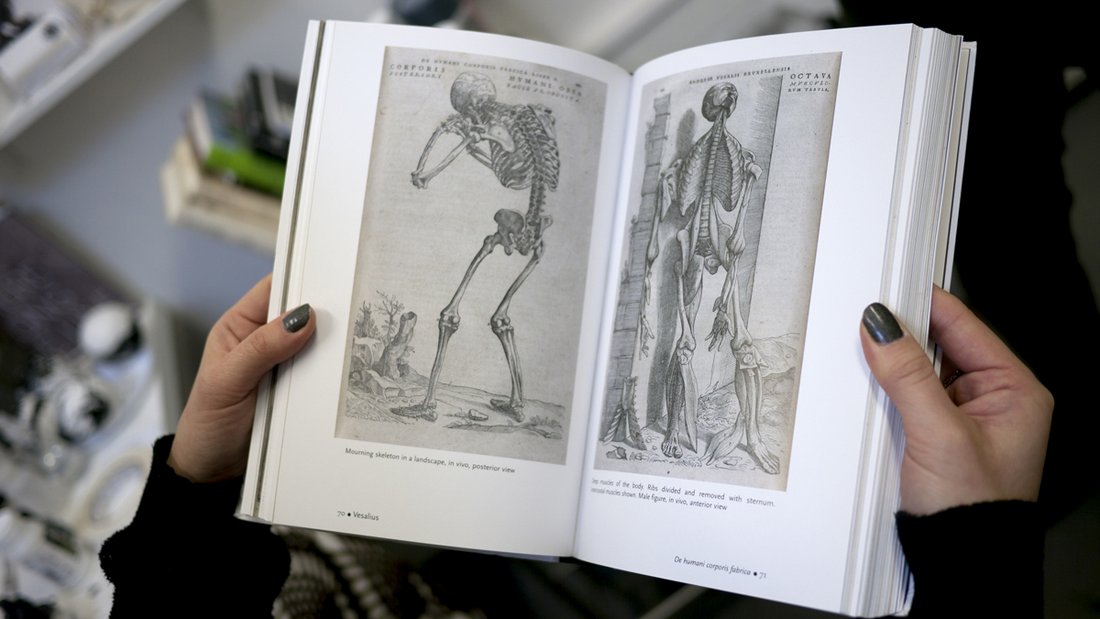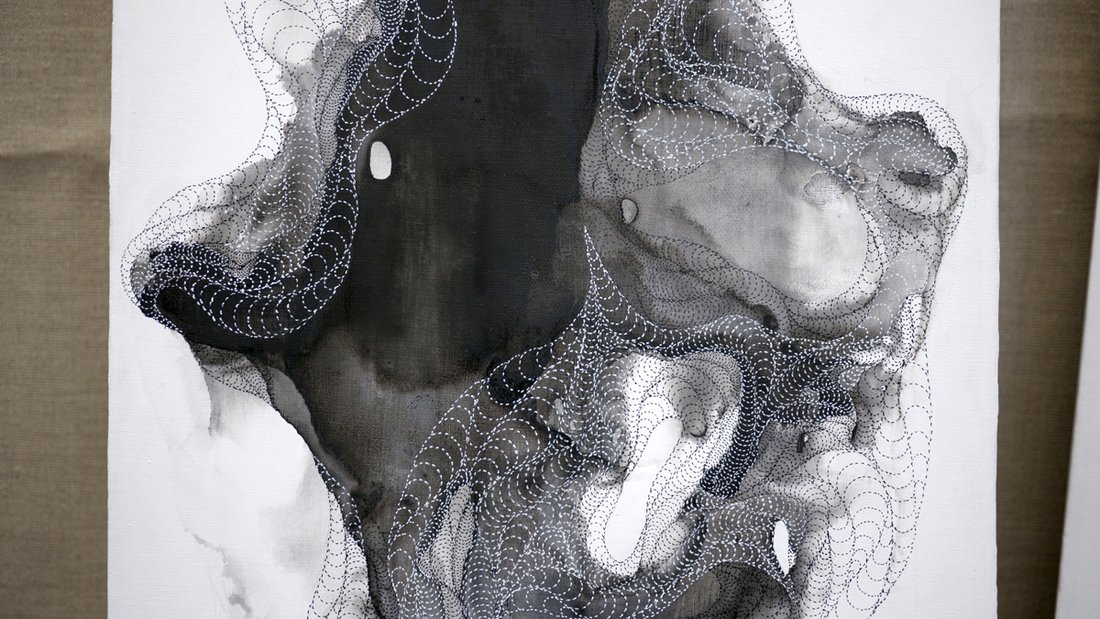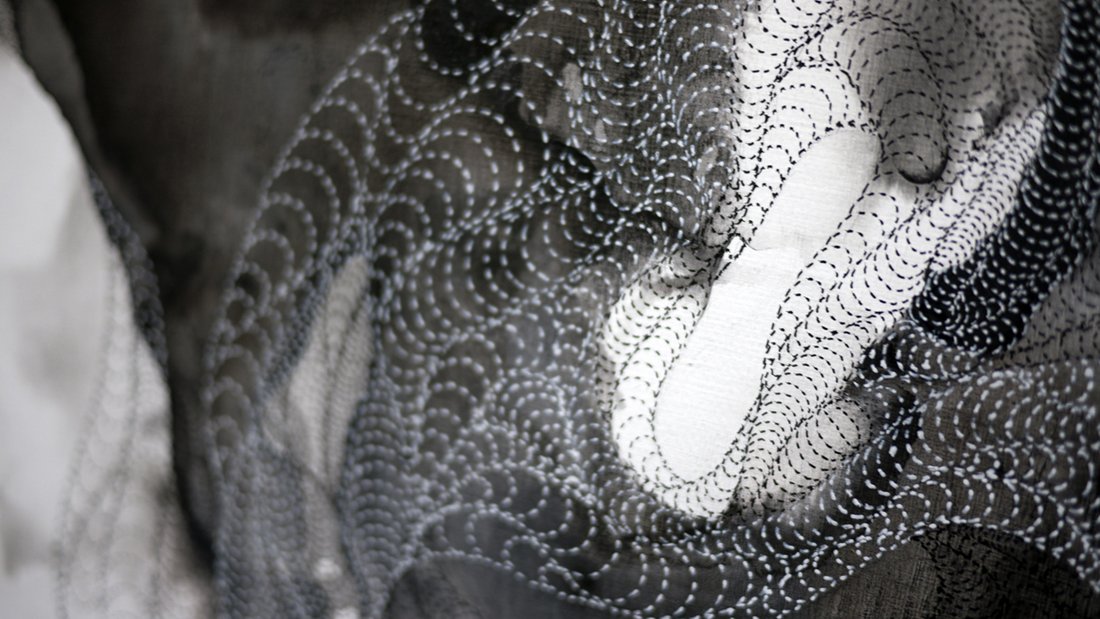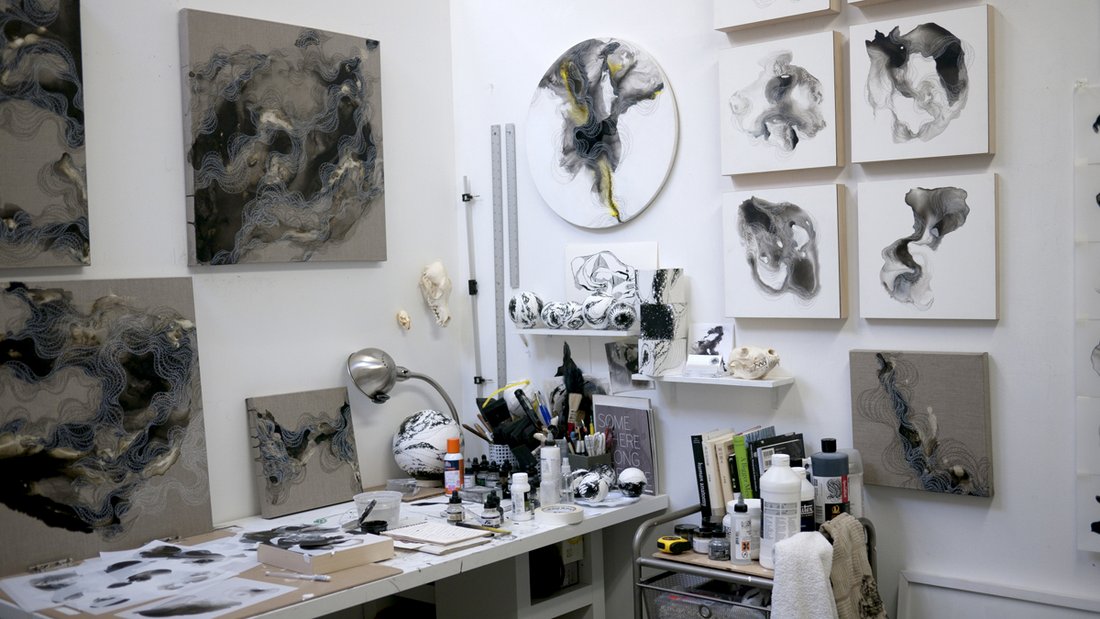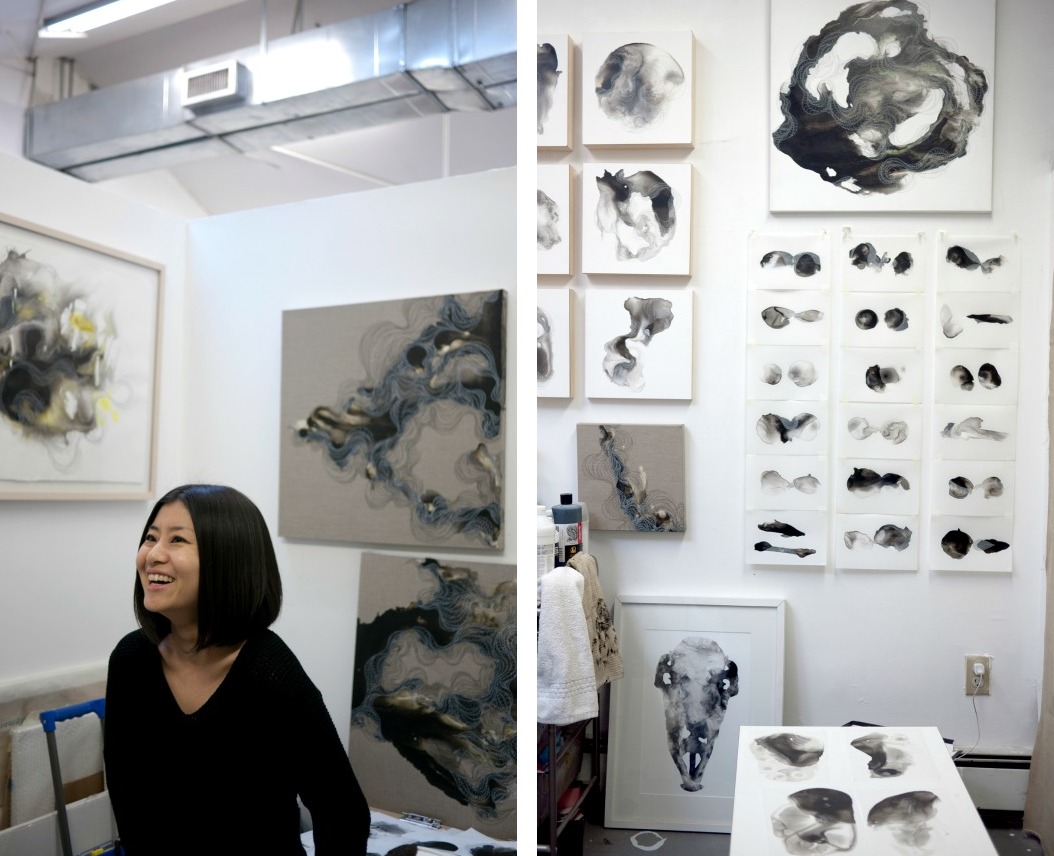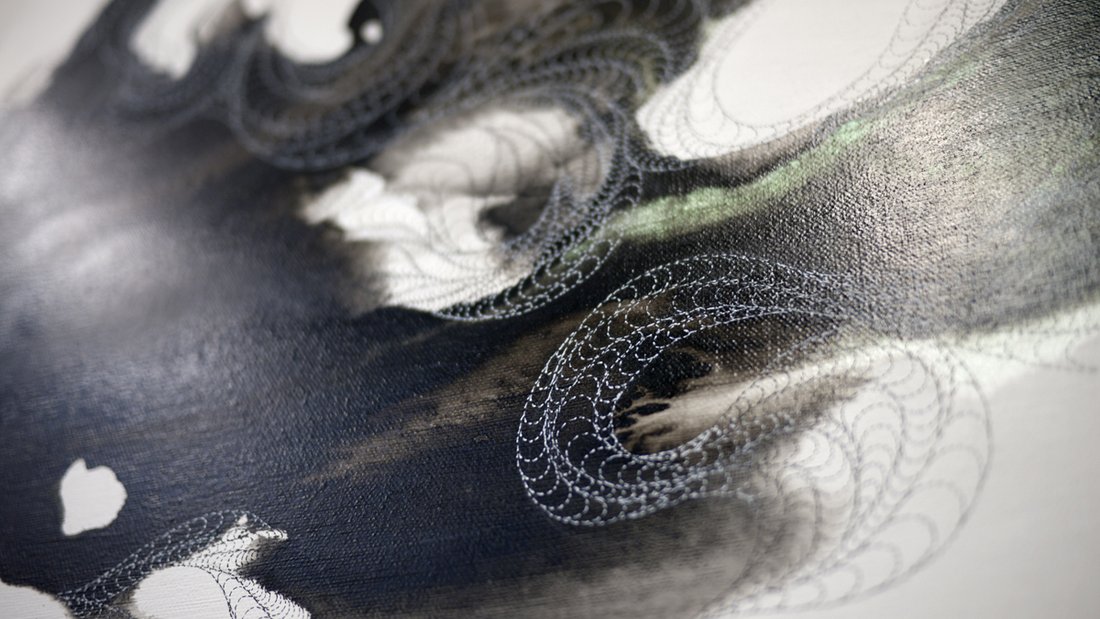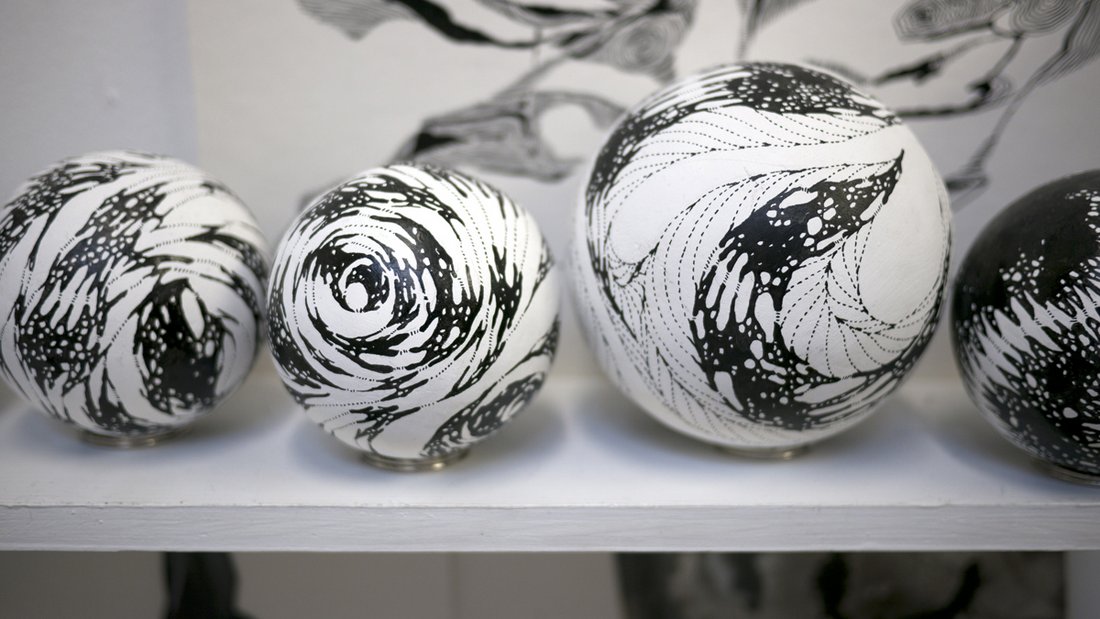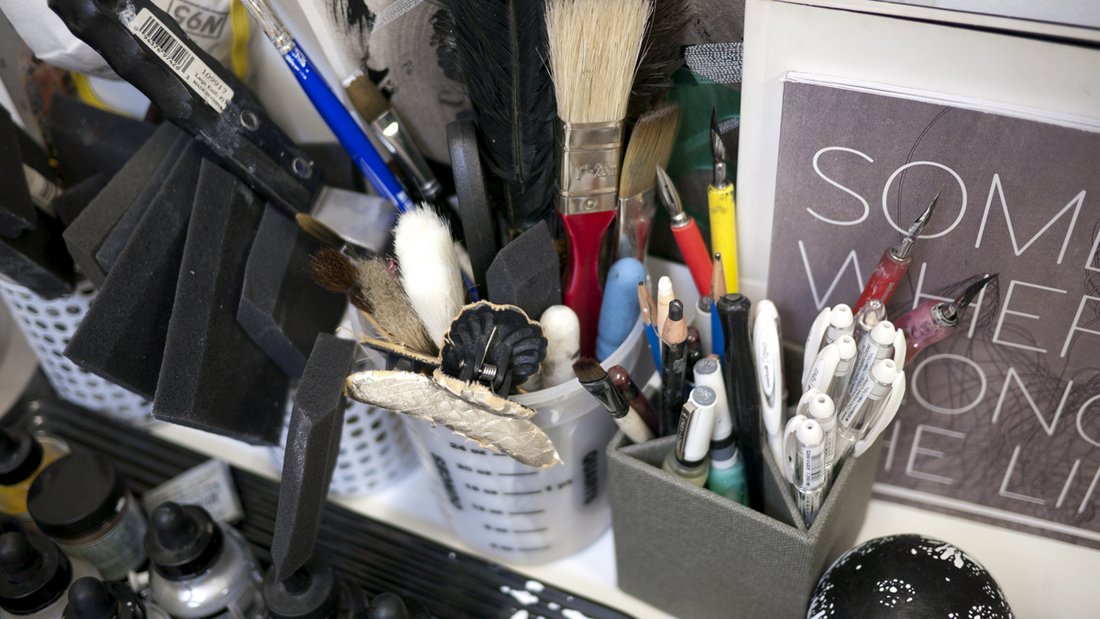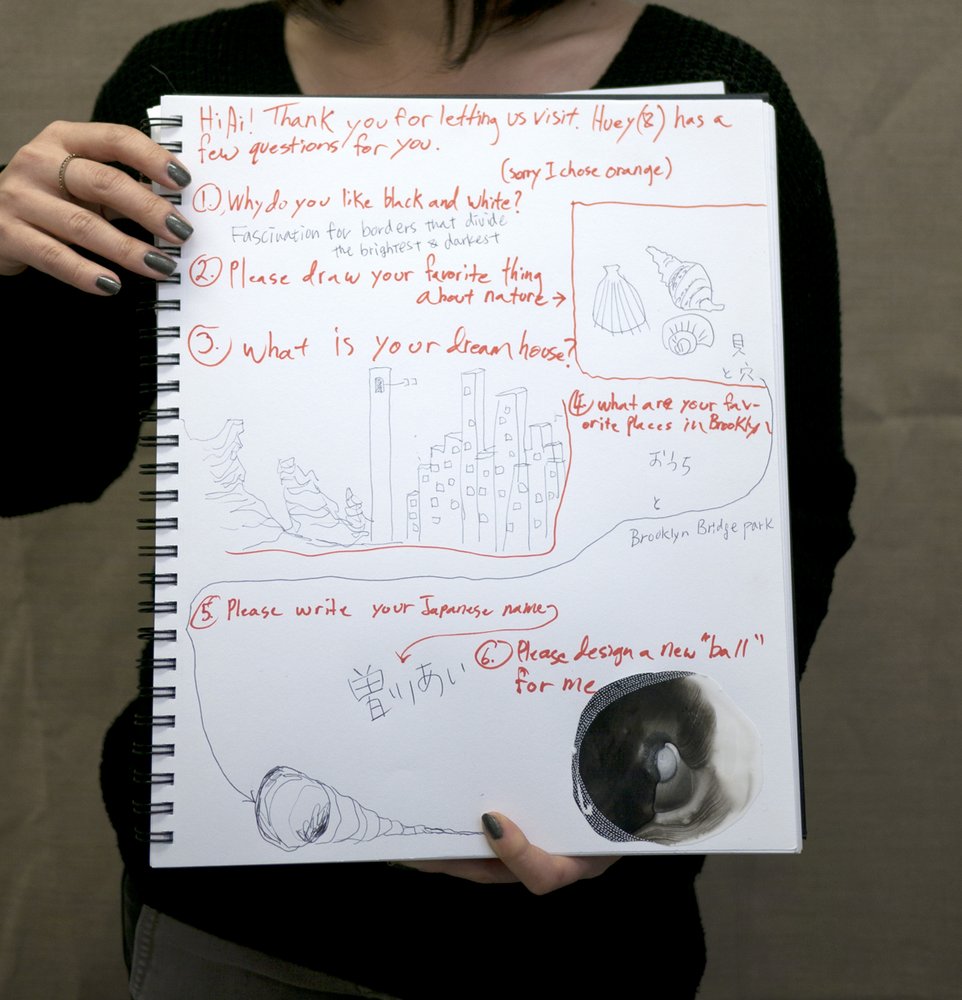Animal skulls, organisms and landscapes
It was a cold, cloudy Saturday, just like most Saturdays have been in February but Gowanus, Brooklyn seemed extra black and white that day. We dodged puddles of ice as we made our way to Ai Campbell’s studio, where she creates her intricate paintings that are inspired by animal bones, organisms and landscapes.
Dark, Rorschach test-like splotches lined the wall as we entered her studio, accessed by a stairway to the 2nd floor. Ai had been testing patterns by dripping ink and letting it organically take shape. She often combines these naturally-formed ink splotches with more carefully controlled lines and patterns. Next to the ink marks was a shelf with an animal skull, which we would later learn once belonged to a coyote.
An industrial designer sent off to war
Born Ai Sogawa, the artist grew up in Osaka where her father, a businessman and jazz musician, was a regional manager at one of the largest jewelers in Japan. “He played saxophone and clarinet,” says Ai, recalling the countless times she heard jazz records growing up. “He still plays in three different bands and at several jazz clubs and is pretty serious.” Ai’s mother went to art school and studied sculpture, jewelry design, and ceramics. She actually worked in the design department of her now-husband’s company, which is how they met. “But I haven’t told you about the biggest artist in the family yet,” said Ai, as if issuing a warning.
Hiroshi Hisatomi, Ai’s grandfather, was an industrial designer who owned a design firm in Osaka. Before WWII he kept himself busy by designing bicycles, cosmetic bottles and even golf courses. Somewhat of an eccentric, legend has it that he once telephoned an associate and had him drive his new Volkswagen from Osaka to come pick him up in Tokyo, which raised more than a few eyebrows.
But when the war started, Hiroshi was deployed to South East Asia. He served as lieutenant and survived through the end of the war but, in the end, it was cancer that ended his life early before Ai was even born. The artist within lived on, however, and would later have a meaningful impact on Ai’s artistic career.
Shadows of an ancestor
After finishing art school in Japan Ai married an American and moved to the States where she continued her practice. Her style, which began as colorful and figurative, gradually transitioned to stark and celestial. “Abstract is more open to interpretation, which I liked,” Ai explained to us.
But the real shift arrived one day in the form of a package from her mother. She opened it up to find postcard-sized prints of drawings her grandfather had made while he was away at war. “As a designer maybe this was his creative outlet,” speculated the granddaughter. “The consistent 5 x 7 inch works contained fine details in the vivid contrast of black and white. Because he passed away before I was born, those drawings were my only interactions with him.”
An encounter with the writings of a master
“What books are on your shelf,” I asked, pointing to a cluster of English and Japanese books that sat behind paint jars. Ai reached for a minimal, cream-colored one, pulled it out and paused for a moment. It was “The Art of Margins” (yohaku no geijutsu) by the seminal Japan-based Korean artist Lee Ufan. Ai had encountered Lee Ufan several years ago – at the Kinokuniya bookstore in midtown Manhattan – in a similar fashion; she had instinctively reached for it on a book shelf as if it had flagged her down.
Actually, it was the title of the book that had originally caught Ai’s attention. She had recently completed a session with a counselor who was going to help her better compose her artist’s statement. She had been convinced to embrace the Asianness of her work and her use of negative space. The book was an import from Japan and even at $80 Ai felt she had to have it. Not only did she read it cover-to-cover, the book sparked a research project into Lee Ufan – his work and his writing – that, most recently, had taken Ai to Naoshima, Teshima and other islands in Southern Japan where many of Ufan’s work can be found.
Desert
I enjoy seeing sights in the desert of numerous broken pillars. There are conflicting energies: one is trying to obliterate, while the other tries to stay standing. Within this conflict I see the shape of time. The reason why the desert can seem so vast is because of these remnants and fragments.* – Lee Ufan
Here is another quote that was underlined in Lee Ufan’s book:
The fate of a painting
I do not try to create eternal works that boast of our power as humans. I create because I have an interest in the fate of paintings. Within 10,000 years my paintings will likely be gone and my canvases rendered to shreds. Humans frantically try to create and build worlds around them while nature continues to pull them back into the earth. The vicious competition to be and not to be is a beautiful battle. This is why I do not favor perfect, strong and defiant works of art. I prefer to stand on the delicate balance where both sides of the game can be observed.* – Lee Ufan
*(quotes translated from Japanese to English by the author)
Ai takes meticulous notes wherever she goes. She hates titling her work and struggles with conceptualizing it, but her notes help her keep a record of her thoughts.
She’s intrigued by dichotomies but, specifically, those that aren’t always apparent. “For example,” she explains, “something that appears very clean and calm from a distance but it contains very intense details close up, or looks beautiful in a first look but after taking some time to examine what it really is, it actually looks almost disturbing.”
Her work takes inspiration from rocks, geological stratum and other elements of nature that have taken form, layer by layer, over the years. But it’s true what they say about your environment, and how it shapes the way you see. Ai has been in NY now for 7 years and she’s also developed a keen fascination for the build-up of grime and filth on the subway system.
Her photos, some of which she posts to instagram, are full of abstract shapes that may very well be stains or grime on train windows and floors.
Though still in her 30s, Ai has been thinking a lot about death lately. “I find it amazing,” she says, referring to the coyote skull on her shelf, “that this once had skin over it and was moving around.” When you’re young life seems to go on forever. But looking at the skull “makes me realize that I really need to accomplish what I can today.” She smiles and says, proudly, “I also have a deer skull at home.”
Questions from a little curator
As usual, Huey (8) had some questions for Ai.
(Many thanks to Masako Shiba and Kaori Sohma for making this studio visit possible!)

